My Neck and Scroll process
Originally, when I first began making instruments, I laid out the scrolls with a pencil and simply started carving. However, that was extremely labor intensive and not very accurate, either. As a result, it was very easy for me to lose track of where I was going, and ruin a scroll by carving away wood I really needed. (Obviously, that is a “bitter pill to swallow,” having to scrap a scroll and start over.)
Learning from a Better Maker
So, then, what has changed? Fortunately, I watched how a viola maker in Brazil (Luis Manfio, of Sao Paulo) carves his scrolls, on a photo-essay he once posted. To begin with, he used a fine-toothed saw to cut “tangents” to the scroll pattern. Then, he used the same saw to follow the side surfaces of the scroll and remove the scrap wood. Understandably, this was a much better way than I had been attempting, so, ever since then, I have followed that path.
So, then: here is what that process looks like, using the current commissioned instrument as an example:
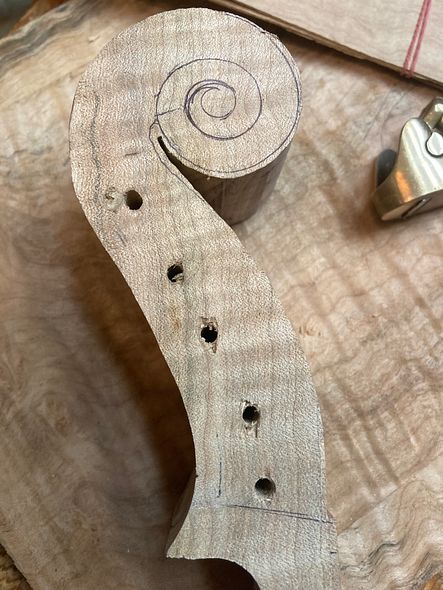

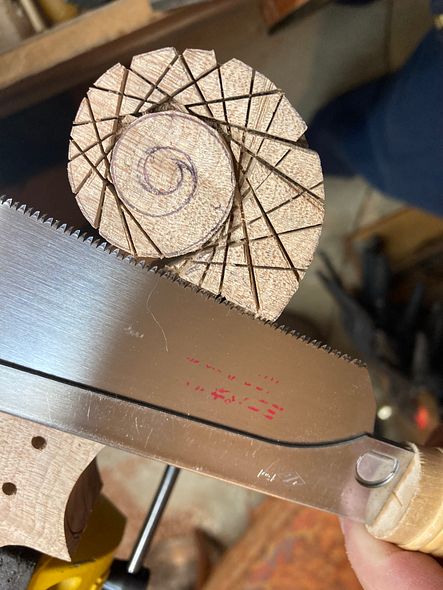

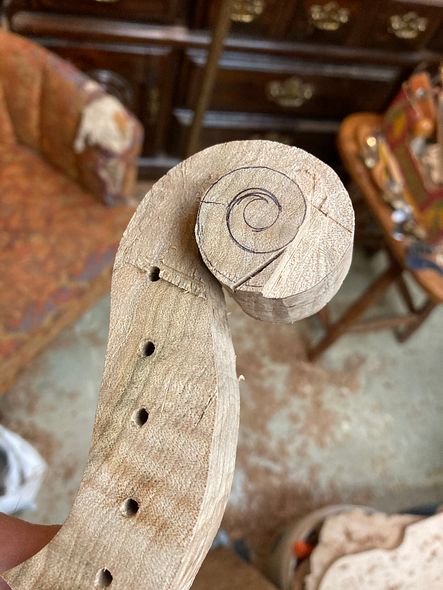
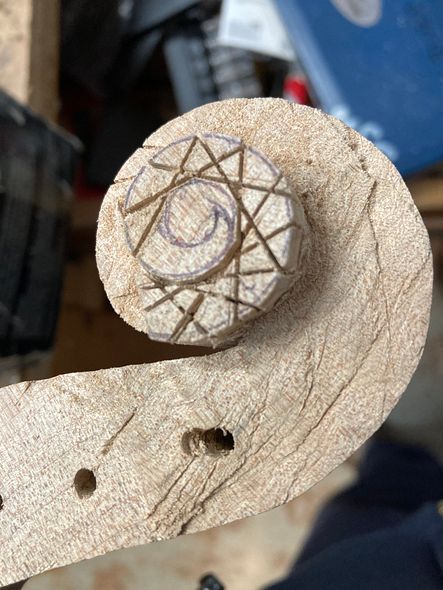
Then I carefully cut away the waste wood from the center area of the scroll, using small gouges.
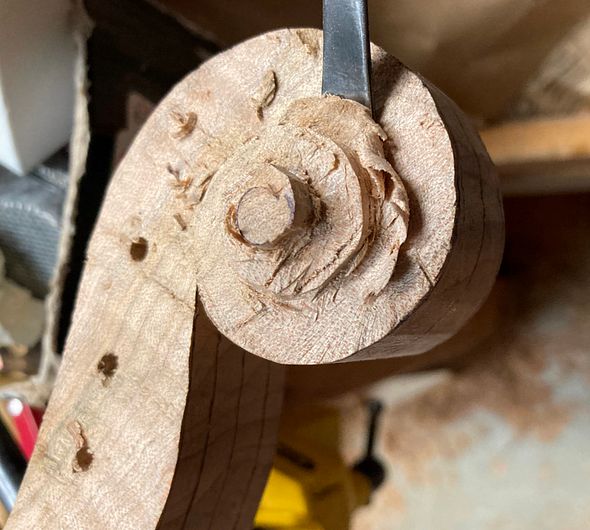

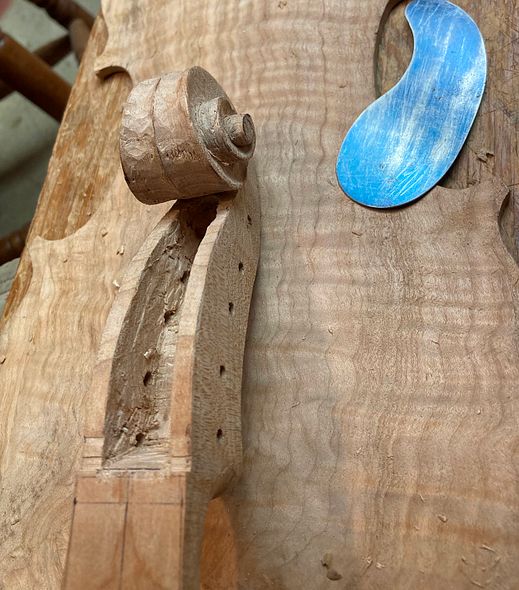
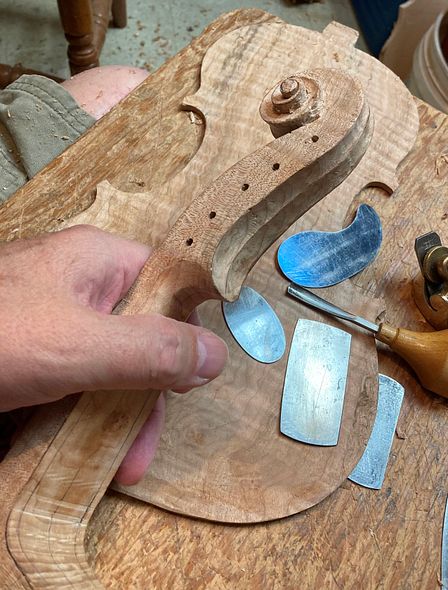
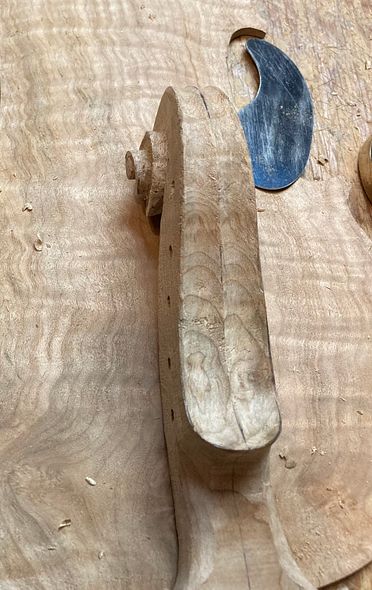


Installing the Fingerboard
After the scroll is close enough to correct that it will not be changing much, I will trim off the excess wood from the sides of the “handle-portion” of the neck. Then, I will temporarily install the fingerboard, using three “dots” of hot hide glue.
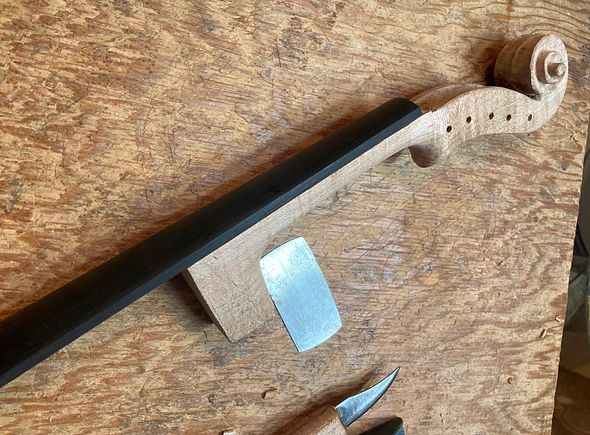
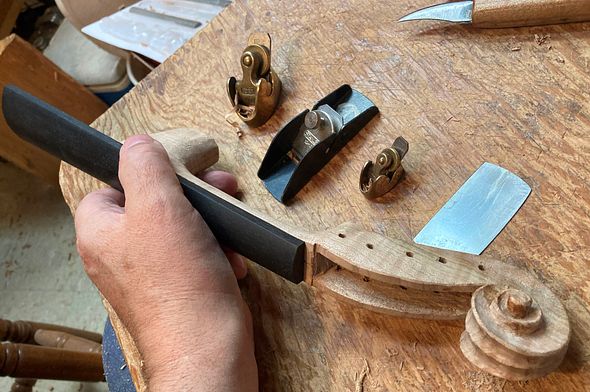
Subsequently, the next step is to install the neck into the neck-block on the instrument.
We will talk about that later.
Thanks for looking.

